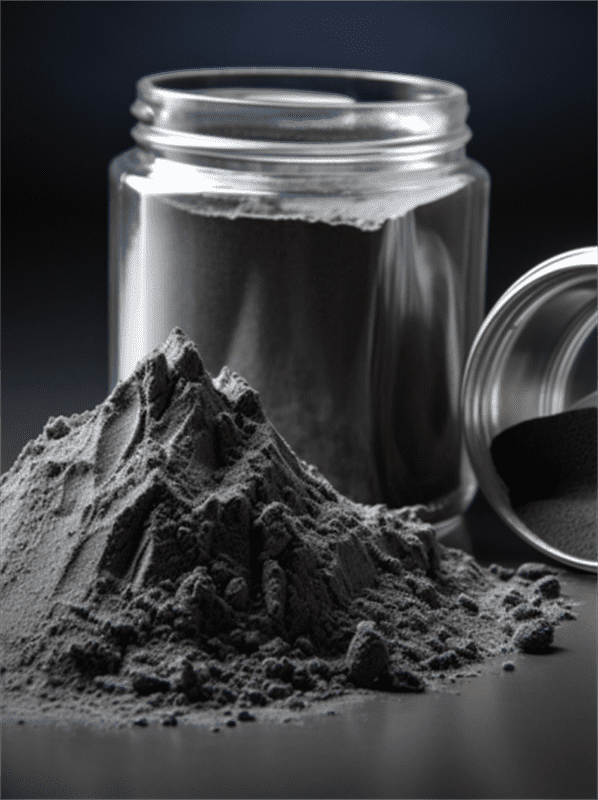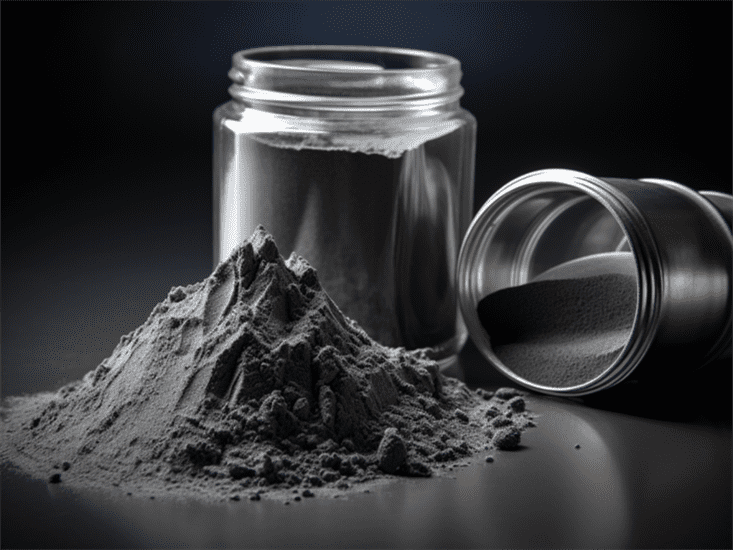Introduction to Atomization Technology
Table of Contents
Atomization technology refers to processes that turn bulk liquids into tiny droplets or a fine spray. It is widely used in applications like combustion, coating, cleaning, humidification, and more. This article will provide a detailed guide to atomization equipment, working principles, applications, design considerations, supplier selection, installation, operation, maintenance, and frequently asked questions.
Introduction to Atomization Technology
Atomization is the process of breaking up bulk liquids into fine droplets by imparting energy. It converts liquids from continuous streams or pressurized flow into dispersed mists.
Atomization enables improved contact between the liquid and a gas, substrate, or another immiscible liquid. It facilitates rapid heat and mass transfer, chemical reactions, and changes of state.
Some key advantages of atomization technology include:
- Higher surface area contact resulting in faster reactions and transfer processes
- Better mixing and interaction between different phases
- More uniform treatment and coatings
- Enhanced combustion, evaporation, humidification, or cleaning
- Precise control over droplet size distribution
Atomization is widely used in applications like:
- Fuel injection in engines
- Spray drying of foods, chemicals, and pharmaceuticals
- Humidification and fogging
- Painting and coating
- Agricultural chemical spraying
- Medical nebulizers
- Perfume dispensers
- Fire suppression
- Wastewater treatment
- Flue gas scrubbing
The core technology involves forcing a pressurized liquid through a nozzle opening at high velocity. This imparts energy to destabilize the liquid stream and break it up into droplets.
Different atomization techniques impart energy in different ways. The key methods are:
Types of Atomization Techniques
| Method | Principle |
|---|---|
| Pressure atomization | Forcing liquid through a nozzle under high pressure |
| Rotary atomization | Spinning a liquid off a high-speed rotating cup or disk |
| Pneumatic atomization | Exposing liquid stream to high-velocity gas flow |
| Ultrasonic atomization | Using high-frequency sound waves to disturb liquid jet |
| Electrostatic atomization | Applying electrostatic charge to destabilize liquid surface |
The atomization technique determines the droplet size distribution, spray pattern, droplet velocity, and other parameters. The choice depends on the application’s needs.
Now let us look at some major atomization equipment types and their working principles in more detail.

Types of Atomizers
Atomizers are devices engineered to break up liquids into sprays or mists. Here are some common types and their key characteristics:
Pressure Atomizers
| Type | Principle | Droplet Size | Flow Rate | Pressure | Pattern |
|---|---|---|---|---|---|
| Plain-orifice nozzle | Liquid forced through small hole | 50-500 μm | Low | 2-10 bar | Hollow cone |
| Single-fluid nozzle | Swirl imparted before exit orifice | 15-250 μm | Medium | 5-30 bar | Full cone |
| Dual-fluid nozzle | Atomizing gas accelerates liquid | 5-150 μm | Medium-high | 1-10 bar | Full cone |
| Deflector nozzle | Liquid impinges on deflector plate | 10-150 μm | Medium | 5-20 bar | Wide flat spray |
| Airblast nozzle | High-speed air shatters liquid sheet | 50-400 μm | Medium-high | 1-5 bar | Flat fan |
Pressure atomizers like spray nozzles and single-fluid swirl nozzles are widely used due to their simple construction and ability to cover wide flow ranges. They can be engineered to produce sprays with different drop sizes, patterns, and velocities.
Rotary Atomizers
| Type | Principle | Droplet Size | Flow Rate | Speed | Pattern |
|---|---|---|---|---|---|
| Disk | Liquid fed to center, spins off edge | 10-75 μm | Low-medium | 8,000-35,000 rpm | Circular |
| Cup | Liquid fed to cup, spins off rim | 40-150 μm | Medium-high | 3,000-15,000 rpm | Donut-shaped |
Rotary atomizers consist of spinning components like disks or cups that sling liquid off via centrifugal force. They achieve fine droplet sizes suitable for applications like spray coating and drying. Drawbacks are the complex drive systems required.
Pneumatic Atomizers
| Type | Principle | Droplet Size | Flow Rate | Gas Velocity | Pattern |
|---|---|---|---|---|---|
| Internal mix | Gas mixes with liquid internally | 10-100 μm | Low-medium | 100-250 m/s | Hollow cone |
| External mix | Gas blows perpendicular to liquid | 50-400 μm | Medium-high | 75-100 m/s | Flat fan |
| Whistle nozzle | High-speed gas creates low pressure | 25-75 μm | Low | 100-350 m/s | Hollow cone |
Pneumatic atomizers use gas momentum to shred the liquid into droplets. They offer advantages like low liquid pressure needed and can handle viscosities. But they require high volumes of compressed air or gas.
Ultrasonic Atomizers
| Type | Principle | Droplet Size | Flow Rate | Frequency | Pattern |
|---|---|---|---|---|---|
| Vibrating surface | Liquid placed on vibrating plate | 5-100 μm | Very low | 20-200 kHz | Wide dispersion |
| Vibrating nozzle | Liquid passed through vibrating nozzle | 15-150 μm | Very low | 20-120 kHz | Spray cone |
Ultrasonic atomizers work by using high-frequency vibrations to destabilize the liquid flow. They can achieve very fine droplet sizes suitable for misting and humidification. But have limited flow capacity.
Advanced Atomizers
Some other advanced atomization methods like electrostatic, ultrasonic gas atomizing, and effervescent atomizing are also used for specialized applications.
Now that we have seen the various atomizer types, let us look at critical design and operating parameters.
Atomizer Design Parameters
Following are some key parameters to consider when selecting and designing atomizers:
Droplet Size
A key outcome of atomization. Fine droplets below 100 μm are needed for applications like coating. Larger droplets work for sprinkling or humidification. Achievable sizes depend on technology.
Flow Rate
Atomizer capacity ranging from less than 1 LPH to over 50,000 LPH. Match atomizer size to application needs.
Spray Pattern
Hollow cone, full cone, flat fan, or circular patterns. Select pattern shape based on coverage needs.
Droplet Velocity
Typical range 5 – 100 m/s depending on pressure and atomizer type. Higher velocities improve momentum transfer.
Liquid Properties
Viscosity, surface tension, and temperature affect atomization. Account for liquid properties when selecting atomizer.
Operating Pressure
Pressure atomizers need high liquid pressure of 2-30 bar. Lower pressure needed for pneumatic types.
Gas Flow Rate
Pneumatic atomizers require high gas flow rates. Critical for obtaining desired drop sizes.
Rotational Speed
Spin rates from 3,000 – 100,000 rpm for rotary atomizers. Higher speed gives smaller drops.
Power Consumption
Important factor. Pressure and rotary types consume significant power.
Material Compatibility
Atomizer materials must be compatible with liquid chemical properties.
Cost
Wide range based on type, size, materials. Balance performance and budget needs.
Consider all parameters and select atomizer to meet the application requirements in the optimal way.
Applications of Atomization Technology
Atomizers are used in a vast range of industrial, commercial and consumer applications. Here are some major examples:
Spray Drying
Turns liquid feeds into dried powder by atomizing the feed into hot air. Used for foods, chemicals, pharmaceuticals.
| Application | Atomizer Used | Drop Size | Pattern |
|---|---|---|---|
| Milk powder | Rotary | 40-150 μm | Circular |
| Coffee | Pressure | 50-150 μm | Full cone |
| Detergent | Rotary | 20-100 μm | Circular |
| Ceramic | Ultrasonic | 5-20 μm | Wide dispersal |
Combustion Systems
Atomizers spray fuel into engines and boilers for improved mixing and combustion.
| Application | Atomizer Used | Drop Size | Pattern |
|---|---|---|---|
| IC engines | Multi-hole nozzle | 15-90 μm | Hollow cone |
| Industrial burners | Steam-assisted nozzle | 80-150 μm | Solid cone |
| Oil furnaces | Rotary cup | 50-200 μm | Donut |
Coating and Painting
Atomizers evenly apply paints, lubricants, adhesives onto surfaces.
| Application | Atomizer Used | Drop Size | Pattern |
|---|---|---|---|
| Automotive painting | Rotary bell | 40-90 μm | Circular |
| Furniture coating | Air spray gun | 80-250 μm | Flat fan |
| Adhesives | Ultrasonic | 10-30 μm | Wide dispersal |
| Machine lubrication | Internal mix nozzle | 50-150 μm | Hollow cone |
Humidification and Cooling
Ultrasonic and pressure atomizers generate fine mist for humidity control and cooling.
| Application | Atomizer Used | Drop Size | Pattern |
|---|---|---|---|
| Greenhouses | Spinning disk | 50-100 μm | Circular |
| Data centers | Ultrasonic plate | 5-20 μm | Wide dispersal |
| Machining | Annular nozzle | 75-150 μm | Solid cone |
Agricultural Spraying
Hydraulic nozzles spray pesticides, fertilizers, and other agrochemicals for crop care.
| Application | Atomizer Used | Drop Size | Pattern |
|---|---|---|---|
| Broadcast spraying | Deflector nozzle | 80-250 μm | Flat fan |
| Row crop spraying | Twin fluid nozzle | 150-400 μm | Hollow cone |
| Orchard spraying | Whirl chamber | 100-250 μm | Hollow cone |
Wastewater Aeration
Fine bubble diffusers atomize air into wastewater for oxygen transfer during treatment.
| Application | Atomizer Used | Bubble Size | Pattern |
|---|---|---|---|
| Activated sludge tank | Submerged turbine | 1-5 mm | Dispersed |
| Oxidation ditch | Porous membrane | 0.5-2 mm | Wide dispersal |
| Aerated lagoon | Mechanical surface aerator | 3-8 mm | Random |
This shows the remarkable range of industries and processes that leverage atomization technology due to its advantages.
Now let us look at engineering considerations for atomizer selection and design.

Engineering Design Guidelines
Proper design is key to achieving optimal atomizer performance for the application. Here are some guidelines:
Droplet Size Distribution
A key criterion. Select atomizer technology based on target drop sizes needed. Use measurements like DV10, DV50, DV90.
Liquid Properties
Consider viscosity, surface tension, corrosiveness, and temperature. Match materials and operating conditions.
Flow Rate Capacity
Size atomizer to provide necessary flow range. Add safety margin of 20-30%.
Spray Coverage
Choose spray angle, pattern and height to achieve required coverage. Account for overlap.
Pressure Rating
Atomizer and piping must withstand necessary liquid and gas pressures. Add safety factor.
Mounting Configuration
Layout to provide proper spray targeting, drainage, and accessibility for maintenance.
Operational Control
Install instrumentation to control flow, pressure, rotational speed, gas flow within operational range.
Liquid Filtration
Install filters to remove particles that could clog small orifices. Specify 10-25 micron rating.
Service Access
Allow safe access to internal components requiring inspection or replacement.
Materials of Construction
Select materials resistant to liquid properties and environmental conditions. Avoid corrosion.
Following these guidelines will result in an atomizer system optimized for peak performance and reliability.
Supplier Selection and Costs
Many manufacturers offer atomizers tailored to different applications. Here is guidance on selection and budgeting:
Leading Atomizer Manufacturers
| Company | Location | Products |
|---|---|---|
| Spraying Systems Co. | USA | Full range of nozzles |
| EXAIR | USA | Compressed air nozzles |
| Lechler | Germany | Pressure nozzles |
| Schlick | Germany | Rotary atomizers |
| Düsen-Schlick | Germany | Pneumatic nozzles |
| Sono-Tek | USA | Ultrasonic atomizers |
Estimated Atomizer Costs
| Type | Capacity | Materials | Price Range |
|---|---|---|---|
| Pressure nozzle | 1 – 20 GPH | Industrial duty | $50 – $500 |
| Pneumatic nozzle | 5 – 100 GPH | Industrial duty | $100 – $1,000 |
| Rotary disk | 5 – 30 GPH | Standard | $2,000 – $5,000 |
| Ultrasonic | 0.1 – 2 GPH | Standard | $1,000 – $3,000 |
- Prices vary based on materials, sizes, and specifications
- Budget 2-4X for highly engineered application-specific designs
- Leading OEM suppliers offer reliable performance and support
Tips for Selecting Atomizer Suppliers
- Verify expertise and track record in your application area
- Check range of available nozzle designs and flow capacities
- Ensure local sales and technical support availability
- Request samples to test atomizer performance
- Review warranties and service life guarantees
- Compare pricing between 3-5 suppliers for budgeting
- Prioritize quality over lowest cost to avoid maintenance issues
This provides a starting point to source and budget for quality atomizers suited to your application needs.
Installation, Operation and Maintenance
Proper installation, usage and maintenance are vital for optimizing atomizer performance, longevity and safety.
Installation Guidelines
- Mount securely using manufacturer recommended hardware
- Pay attention to height, orientation and spray targeting
- Allow sufficient clearances for airflow and spray dispersion
- Connect liquid and gas lines securely following standards
- Install filtration, valves and instrumentation per design
- Check for leaks, vibrations, blockages before commissioning
Safe Operation
- Operate within recommended pressure, temperature and load ranges
- Use protective equipment like face shields when in close proximity
- Clean clogged orifices using compressed air or soft brush only
- Monitor flow rate, pressure drop, spray pattern for issues
- Shut down immediately if abnormal noise or severe vibrations occur
Maintenance Schedule
| Activity | Frequency |
|---|---|
| Inspect exterior condition | Weekly |
| Check mounts, connections | Monthly |
| Clean external surfaces | Quarterly or as needed |
| Monitor filters, gaskets, seals | Quarterly or per OEM |
| Inspect internal passages | Annually |
| Replace worn components | On performance deterioration or per OEM |
Storage and Handling
- Cap openings when nozzle is not in use
- Store in clean, dry environment away from vibration
- Avoid physical damage to delicate components
Proper installation combined with good operating and maintenance practices will provide long and trouble-free atomizer operation.

FAQs
Here are answers to some frequently asked questions about atomizer selection and troubleshooting issues:
What are typical reasons for poor atomization?
- Clogged or worn nozzle orifices due to inadequate filtration
- Liquid viscosity too high for atomizer design
- Operating pressure too low
- Rotary atomizer speed too low
- Gas flow rate insufficient for pneumatic types
How to correct non-uniform spray patterns?
- Clean or replace nozzle orifices if clogged
- Adjust liquid and air pressures within recommended range
- Replace worn nozzle components
- Verify alignments, settings per manufacturer
What causes nozzle clogging problems?
- Insufficient liquid filtration – install finer filters
- Operating below minimum pressure – increase pressure
- Allowing atomized liquid to dry and deposit on orifices
How to reduce atomizer operating noise?
- Ensure operating conditions match specifications
- Check for damaged or worn components
- Isolate atomizer using dampeners and flexible connections
- Modify acoustic environment to absorb noise
What maintenance helps maximize atomizer life?
- Follow recommended cleaning procedures regularly
- Replace filter elements when pressure drop increases
- Use soft brushes and compressed air for cleaning – avoid hard objects
- Lubricate bearings and seals per OEM procedures
- Inspect critical parts like disks and cups regularly for wear
When is it necessary to rebuild or replace atomizer?
- If orifices are badly worn and increasing in size
- If liquid impingement surfaces are damaged, affecting spray
- If disk/cup surfaces have visible irregularities or defects
- If seals are leaking and bearings worn out
- If critical spares are no longer available
Where can I find atomizer manufacturers and suppliers?
- Leading companies like Spraying Systems, Schlick, Lechler, EXAIR, Sono-Tek
- Industrial supply distributors like Grainger, McMaster-Carr, WW Grainger
- Online vendors on platforms like Alibaba, Made-in-China, globalsources.com
- Local vendors in your region specializing in spray technology
Conclusion
Atomization is a vital process used in diverse applications across industries to transform liquids into sprays and mists. Selecting the right atomizer technology and design for your needs is critical. Pressure, rotary, pneumatic and ultrasonic atomizers each have pros and cons. Applications range from spray drying to painting to agricultural spraying.
Share On
MET3DP Technology Co., LTD is a leading provider of additive manufacturing solutions headquartered in Qingdao, China. Our company specializes in 3D printing equipment and high-performance metal powders for industrial applications.
Inquiry to get best price and customized Solution for your business!
Related Articles
About Met3DP
Recent Update
Our Product
CONTACT US
Any questions? Send us message now! We’ll serve your request with a whole team after receiving your message.

Metal Powders for 3D Printing and Additive Manufacturing
COMPANY
PRODUCT
cONTACT INFO
- Qingdao City, Shandong, China
- [email protected]
- [email protected]
- +86 19116340731









